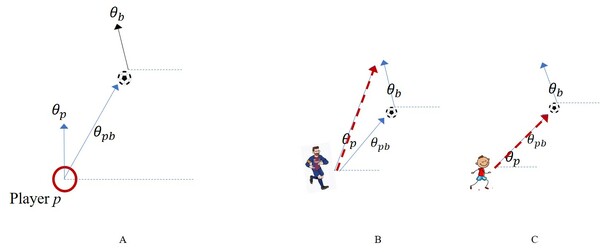Understanding the movement of professional and high school soccer players
(1) Chatham High School, Chatham, New Jersey
https://doi.org/10.59720/20-189
Data analytics plays an increasingly visible role in the sports industry. Professional soccer utilizes data analytics to gain competitive advantage. It is intuitive that basic metrics like speed and passing matter, but the difference they make in the ability to score a goal is an open question. In this project, we were interested in discovering the statistical evidence that differentiates goal-scoring from no-goal-scoring sequences. Using a trajectory data set from professional games, we hypothesized that goal and no-goal sequences would be statistically different. Indeed, we found evidence that faster, longer possessions with more passes were more successful. From the same data set, we also investigated Long Ball, an offensive strategy that pushes the ball to the target goal via a big kick. We hypothesized that Long Ball was effective for goal scoring but found evidence to the contrary. In addition, we were interested in how professional and student players move differently. Comparing a student trajectory data set against the professional data set, we hypothesized that the movement directions of the two groups would be different. Indeed, we found evidence that professional players tended to run where the ball is going whereas students moved towards the ball’s current location more often than professionals. Throughout our study, we applied the 2-sample Kolmogorov–Smirnov test on the cumulative distribution function of each metric to calculate statistical differences between sequences. Our findings support the importance of basic skills in soccer, and this is useful for players at all levels. Additionally, by pinpointing a weakness in student movement, our findings could help students to move more like professional soccer players.
This article has been tagged with: